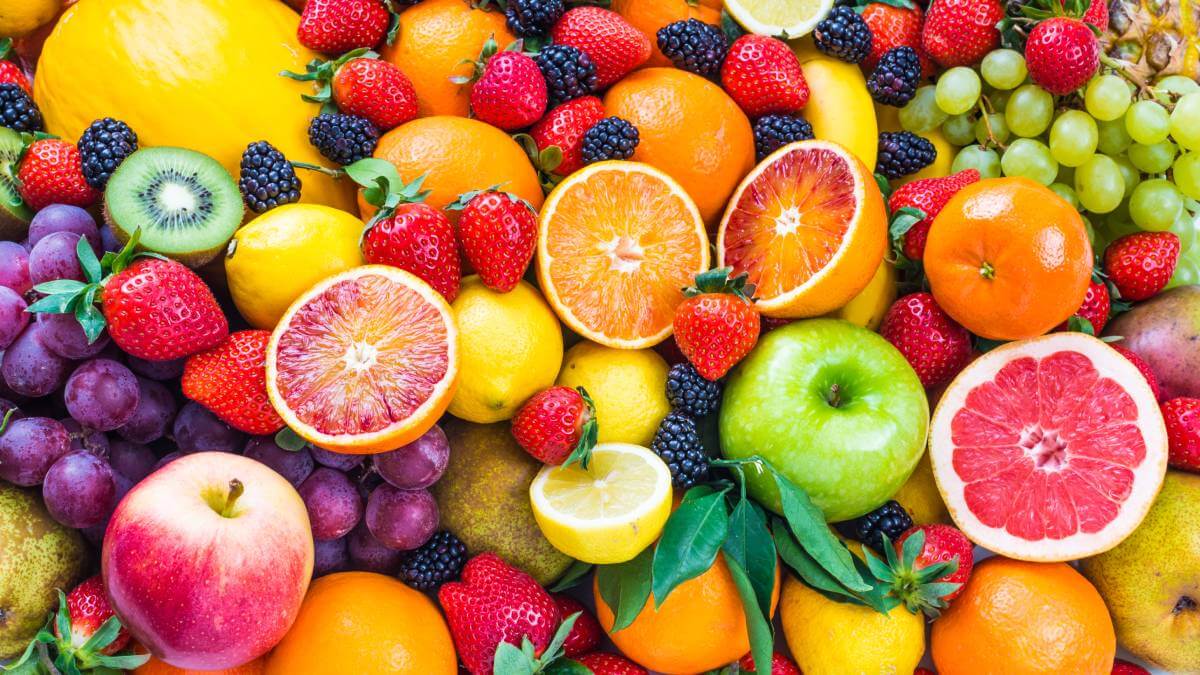Whether fruits and vegies are better consumed with or without their peels is often up for debate. From a nutritional perspective, peels are typically the most nourishing part of the food. Peels are often rich in fibre, vitamins, minerals and antioxidants.
By peeling, you could be throwing away one of the most nutrient-dense parts of the plant. Peels that are extremely tough, difficult to clean, hard to digest or simply inedible should be avoided but some should be celebrated.
Potato
The carb-filled fluffy insides are often more appealing, but potato skins are packed full of fibre and nutrients. Iron, calcium, potassium, magnesium, vitamin B6 and vitamin C are all held in that outer layer.
In fact, 100 grams of potato peel packs seven times more calcium and 17 times more iron than the same amount of potato flesh.
The skin of a sweet potato is also loaded with beta-carotene, which converts to vitamin A during digestion.
Peach
Along with a high dose of fibre, peach skins also contain a whole host of antioxidants and vitamins. They’re high in vitamin A and contain carotenoids, a kind of antioxidant and provitamin, which could help lessen your chances of cataracts.
One study even found that removing peach skin results in ingesting 13 to 48 per cent fewer antioxidants.
Watermelon
The most popular part of the watermelon is the pink flesh, but like its cousin, the cucumber, the whole thing is edible.
Watermelon rinds have an amino acid called citrulline that can help remove nitrogen from your blood and ease sore muscles.
In addition, watermelon is a great source of potassium, vitamin A and vitamin C.
Eating the rind might not sound appetising but it can be pickled, juiced, or simply sauteed and seasoned.
Apple
The skin of an apple contains about half of the overall dietary fibre content. The peel also has four times more vitamin K than its flesh; about 5 per cent of your recommended daily value.
By removing the peel, you lose about a third of those nutrients.
Cucumber
Cucumbers are around 95 per cent water, so you’re removing the majority of the nutrients by peeling them.
The skin holds lots of potassium, antioxidants, vitamin K and fibre.
If it isn’t organic or it has a heavy waxed coating, you might want to peel it anyway.
Eggplant
The purple skin on eggplants contains the potent antioxidant nasunin – a free radical scavenger that has been shown to protect cell membranes from damage.
Nasunin helps eliminate the build-up of plaque in the blood vessels, keeping your heart and the cardiovascular system healthy.
Cooked eggplant is a common meat replacement for vegans due to its tender texture.
Mango
A mango’s peel contains larger quantities of carotenoids, polyphenols, omega-3, omega-6 and polyunsaturated fatty acids than its flesh. It’s also chock-full of dietary fibre.
On top of that, it has polyunsaturated fatty acids and both omega-3 and omega-6.
The skin of a mango can be eaten raw or cooked.
Kiwi
You’ve probably been spooning out the green flesh inside for years, but the whole thing is edible.
The fuzzy skin contains more flavonoids, antioxidants and vitamin C than the insides. But if you find the fuzz unappetising, just scrape it off first.
Zucchini
Like cucumbers, zucchinis are mostly water, so the peel holds the majority of the goodness. By eating it, you’ll get a boost of fibre, potassium, and vitamin C, along with antioxidants such as lutein, carotenoids and zeaxanthin.
Zucchini peel can taste a little bitter so combine it with other flavours in a salad or stir-fry.
Banana
A banana’s peel contains much more fibre than its flesh and is also richer in potassium. It contains the powerful antioxidant lutein that plays a role in maintaining eye function.
The skin can be tough and bitter but can be chopped and boiled for a nice salad addition, juiced along with the flesh or baked and made into a tea.
Orange
The peel of an orange contains twice as much vitamin C than the flesh. They’re also packed with vitamin B6, calcium, potassium, magnesium, and riboflavin (a B vitamin).
The entire peel is bitter and difficult to digest. Use a micro plane to grate it and sprinkle it on salads; zest also works well added to salad dressings.
Citrus shavings pair well with ice cream and chocolate too.
Do you eat your peels? Share your favourite way to enjoy fruit and vegie skins in the comments section below.

